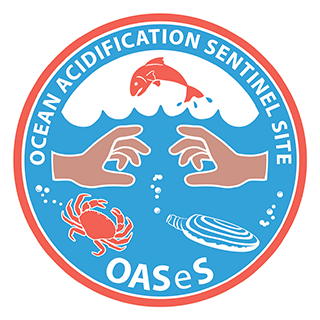Olympic Coast Changes
The waters off the Olympic Coast are especially vulnerable to ocean acidification during the spring and summer, when seasonal winds push surface waters offshore, allowing deeper waters to upwell onto the coastal shelf. These nutrient-rich upwelled waters support enormous seasonal productivity, despite being naturally higher in CO2 and lower in oxygen than the surface layer. Fueled by abundant plankton growth, Olympic Coast species are normally able to tolerate moderately corrosive conditions. But now, the one-two punch of ocean acidification and upwelling is often too much for sensitive species, especially when compounded by 'hypoxic' (extreme low oxygen) events–another side-effect of climate change. Over the past 20 years, fish and crab kills have become increasingly frequent along the Olympic Coast.
While the acute impacts of hypoxic events can be quite obvious (e.g. fish kills or piles of suffocated crabs), the effects of ocean acidification are more difficult to detect and study. Nevertheless, through a combination of field observations, lab studies and models, scientists now have a better understanding of the risks to Olympic Coast species. For example, dissolution of the delicate shells of pteropods, abundant planktonic snails that are an important source of food for everything from salmon to whales, has been definitively linked to acidification off the coast of Washington. Similarly, damage to the carapaces of juvenile Dungeness crabs correlates to exposure to corrosive water. And there’s evidence that Dungeness crabs, like coho salmon, lose the ability to smell important sensory cues in acidified conditions. Even species that are not directly affected by changing ocean conditions can experience impacts if their prey or habitat is vulnerable to acidification.
